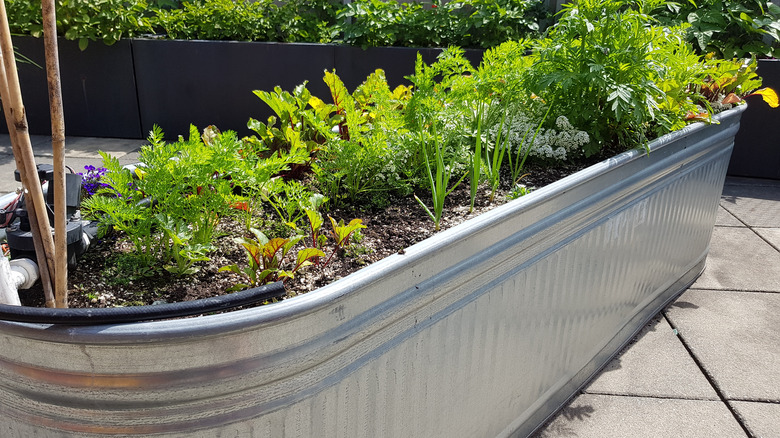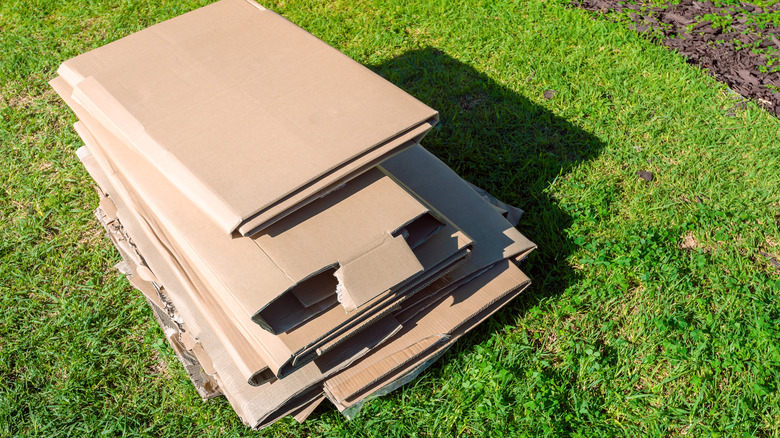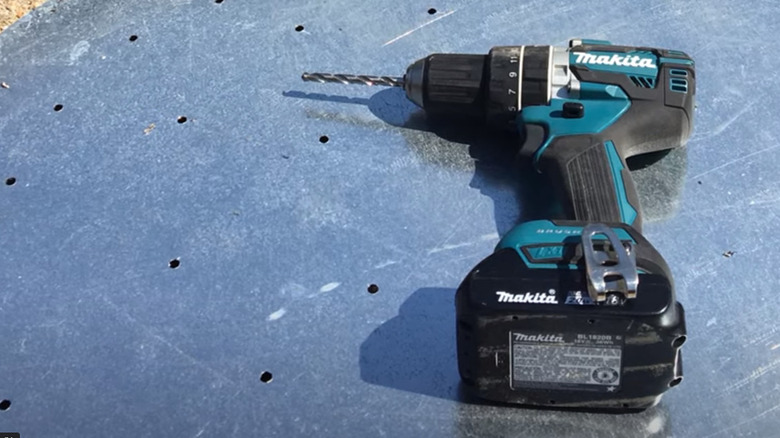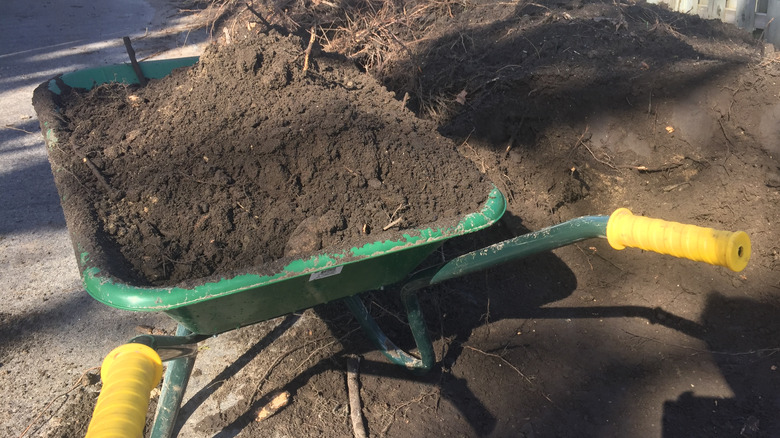How To Use Cattle Troughs As Raised Beds
We may receive a commission on purchases made from links.
Raised beds are an excellent solution for growing food in areas where in-ground beds are not possible or desirable. While wooden raised beds are often an affordable option, wood tends to rot and must eventually be replaced. On the other hand, metal will last a long time. Cattle troughs, also known as stock tanks, come in various shapes and sizes, perfect for whatever you want to grow in a raised bed. Even better, only minimal preparation is needed to turn a cattle trough into a successful garden.
Cattle troughs are usually found in farm stores. Look for these products at local farmer's coops and national chains like Tractor Supply Co. Prices will vary depending on your location, but comparing prices at different stores can save you a lot of money. For example, if one store sells the size you want for $90, you might be able to find it on sale at another nearby location for $60 or less. A little research can save you money that you can use for your garden, so shop around to get the best deal.
Prepare the ground
Before you prepare your cattle trough, you will need to pick the right spot in your garden. First, select a location in full sun since most vegetables and flowering plants grow best in a space that gets at least 8 hours of direct sunlight a day. Once you get your planter full of soil, it will be heavy, so choose your location carefully to make your task easier. You will not want to have to empty it back out to move it to a new location!
With the perfect placement for your raised garden decided, it's time to prepare the ground. First, smother weeds and grass with a thick layer of cardboard to keep them from growing up through the drainage holes and taking over your garden. Since one of the most significant benefits of growing flowers and food in a raised bed is the lack of weeds, this is a simple but vital step.
Turn your cattle trough into a planter
Now that you know where you're going to place your new raised garden, you need to transition the stock tank from something made to retain water to something that allows it to flow out. While wooden raised beds have to be built from scratch, which requires time, energy, and several power tools, turning a cattle trough into a planter really just requires some drainage holes. Well, a lot of drainage holes.
For this task, a power drill and a bit made for drilling through metal, like this metal step bit on Amazon, is ideal. You can drill holes about 8 inches apart if they are at least 1 inch in diameter. If you don't have these items available, you can use a standard high-powered drill with a large drill bit. However, you will need to drill more holes, which should be about 3 inches apart. Most importantly, don't forget those safety products! Cut metal has sharp edges, and those shards can fly, so always wear heavy-duty work gloves and safety eyewear. Then, with your cattle trough upside down, drill holes across the entire width and length.
Fill your planter
It can be expensive to buy enough soil and amendments to fill a large raised bed, so before you start adding your soil mix to the cattle trough, gather up some organic supplies. Fill the bottom of your bed with sticks, leaves, and untreated grass clippings. All these items will take up space while providing material that will slowly decompose, adding nutrients to your soil.
You can purchase pre-made mix by the bag or in bulk. Check your local nurseries or farm supply stores to see if they sell soil mix by the bucket – not a tiny bucket, but a scoop from a front-end loader. One scoop is usually about a 1/2 cubic yard, so you'll need to do the math to get the right amount for the size of your raised bed. If you choose to make your own soil mix, a simple combination of equal parts topsoil, compost, and coconut coir or peat moss will create a nutrient-dense medium for your new garden.



